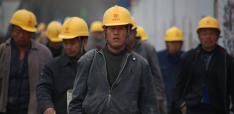The Climate Agenda Upside Down: Thoughts on the World Summit of Regions for Climate
Normal
0
false
false
false
EN-GB
X-NONE
X-NONE
/* Style Definitions */
table.MsoNormalTable
{mso-style-name:"Table Normal";
mso-tstyle-rowband-size:0;
mso-tstyle-colband-size:0;
mso-style-noshow:yes;
mso-style-priority:99;
mso-style-parent:"";
mso-padding-alt:0cm 5.4pt 0cm 5.4pt;
mso-para-margin-top:0cm;
mso-para-margin-right:0cm;
mso-para-margin-bottom:8.0pt;
mso-para-margin-left:0cm;
line-height:107%;
mso-pagination:widow-orphan;
font-size:11.0pt;
font-family:"Calibri",sans-serif;
mso-ascii-font-family:Calibri;
mso-ascii-theme-font:minor-latin;
mso-hansi-font-family:Calibri;
mso-hansi-theme-font:minor-latin;
mso-fareast-language:EN-US;}
Carlo Carraro, Director of the International Center for Climate Governance, unpicks the World Summit of Regions for Climate's commitment to exert bottom-up pressure on governments and international organisations to invest in sustainable development and tackle climate change.
When an international film star opens a summit on climate change, there is always the hope – however justifiable – that the dizzying excitement of their presence will lead to enthusiastic commitments. In the case of the World Summit of Regions for Climate that took place on the 10-11 October 2014 in Paris, this hope may hold. Arnold Schwarznegger, a subtle but relentless climate activist, not only launched the summit but was also integrally connected with the design of the meeting’s objective: to officially establish the “Road to Paris 2015”. To this end, he and the Regions for Climate Action (R20) welcomed local and regional governments, businesses and financial leaders to this participatory community platform. Building on the momentum from September’s UN Climate Summit, the Road to Paris 2015 stressed public/private cooperation. More than this however, it stressed the importance of tackling climate change from the local and regional level. Bottom-up business. Bottom-up government. This objective was more than apparent from the guest list. It nevertheless raises some interesting points.
Since the climate action process began, the focus has been on providing the evidence and pressure for national and international responses. This has been done with the justification that a global-scale problem requires a global-scale response. Almost 20 international meetings (UNFCCC Conference of the Parties) later and we are still hemming and hawing over internationally binding emissions targets. You can see why some may become disillusioned with the idea of a top-down solution to climate change mitigation. But what about the alternative?
What about isolated, grassroots or small-scale efforts? Such bottom-up strategies have persevered alongside international discussion all along, much like the unpromising younger child. But are the quirks that defined that child starting to be recognized for its potential? Maybe not quite yet. Even so, the World Summit of Regions for Climate concluded that these bottom-up initiatives need to start being taken seriously. This statement is encouraging. If the first approach is not pulling through as we hoped, let’s explore Plan B.
However, even if this message is taken seriously, will bottom-up approaches provide the meaningful action that their counterpart has so far not entirely been able to? This is quite unlikely, given the crucial role of emission reductions in the power and agricultural sectors, both often outside the control of local governments. Without mentioning the little control they have over big transport infrastructures, including transport of electricity from renewables (smart grids), which are also crucial to achieve effective emission redutions.
Nonetheless, a bottom-up approach remains very important. And herein lies the importance of the summit: connecting local businesses and governments across regions. This means that it is not just increased bottom-up activity being advocated, but connecting and expanding this activity. This shares skills, information and ideas. This is fundamental if bottom-up approaches are to have a meaningful impact on emissions reductions. However, the summit’s plan does not end here.
In fact, the summit seems to have been angling at a more impactful result from connecting lower-level power holders. It achieved this through its key tangible output: the Paris Declaration. This document is a cross-sector initiative in which subnational governments, business and finance pledge their support to an international climate deal during Paris’ COP21 in 2015. It will be circulated internationally to gain as many signatures as possible before COP21. It states that the signatories “recognize that tackling climate change is a great opportunity for sustainable development if it is associated with the expansion of a low carbon economy from the ‘bottom-up’, at the local and sub- national, civil society, and business level, promoting the creation of new green jobs and improving the health of citizens, developing appropriate technologies, increasing renewable energy production, with better energy security and energy efficiency”. The message is unequivocal: your employees and businesses want climate action. The question is too: will this political pressure work where others before have not?
This post first appeared in Carlo Carraro's blog.


